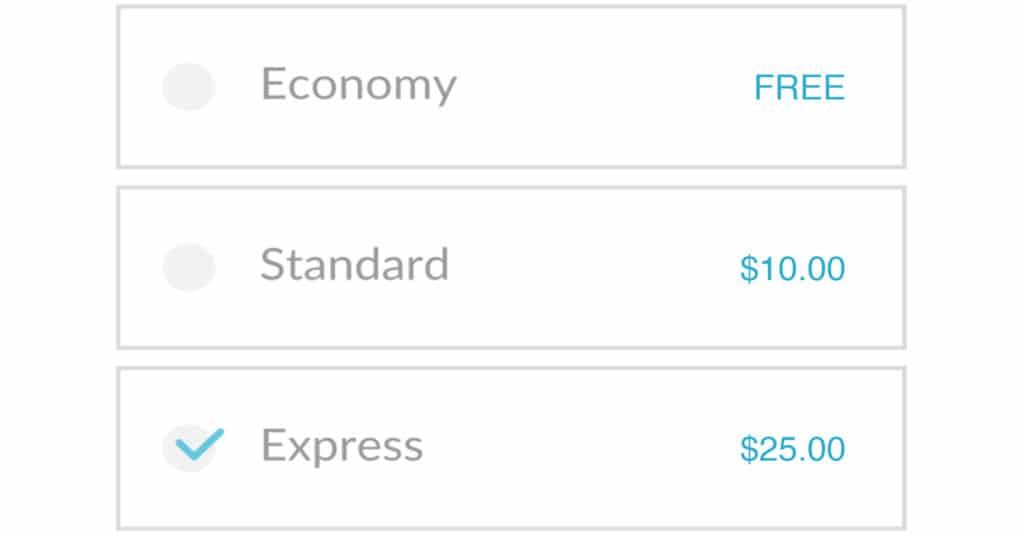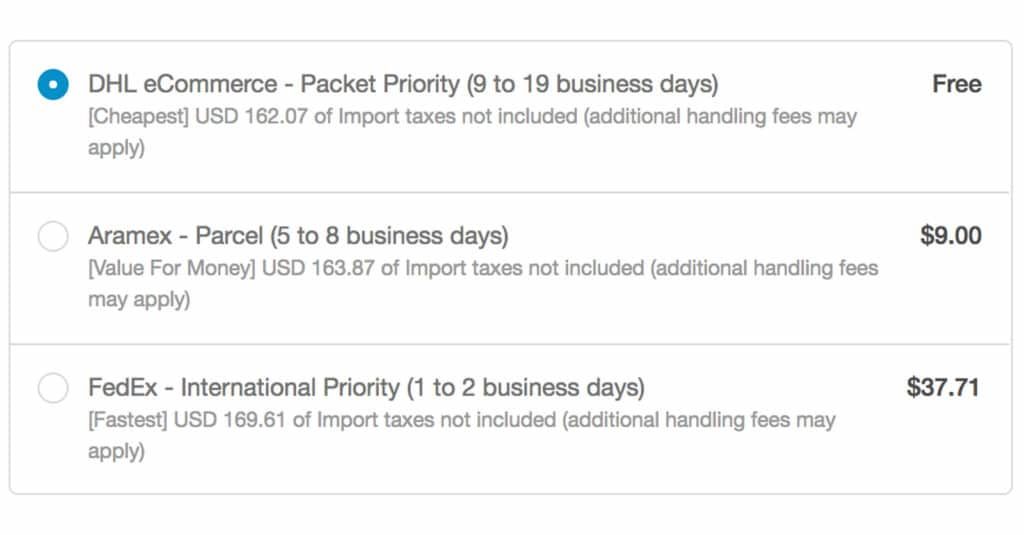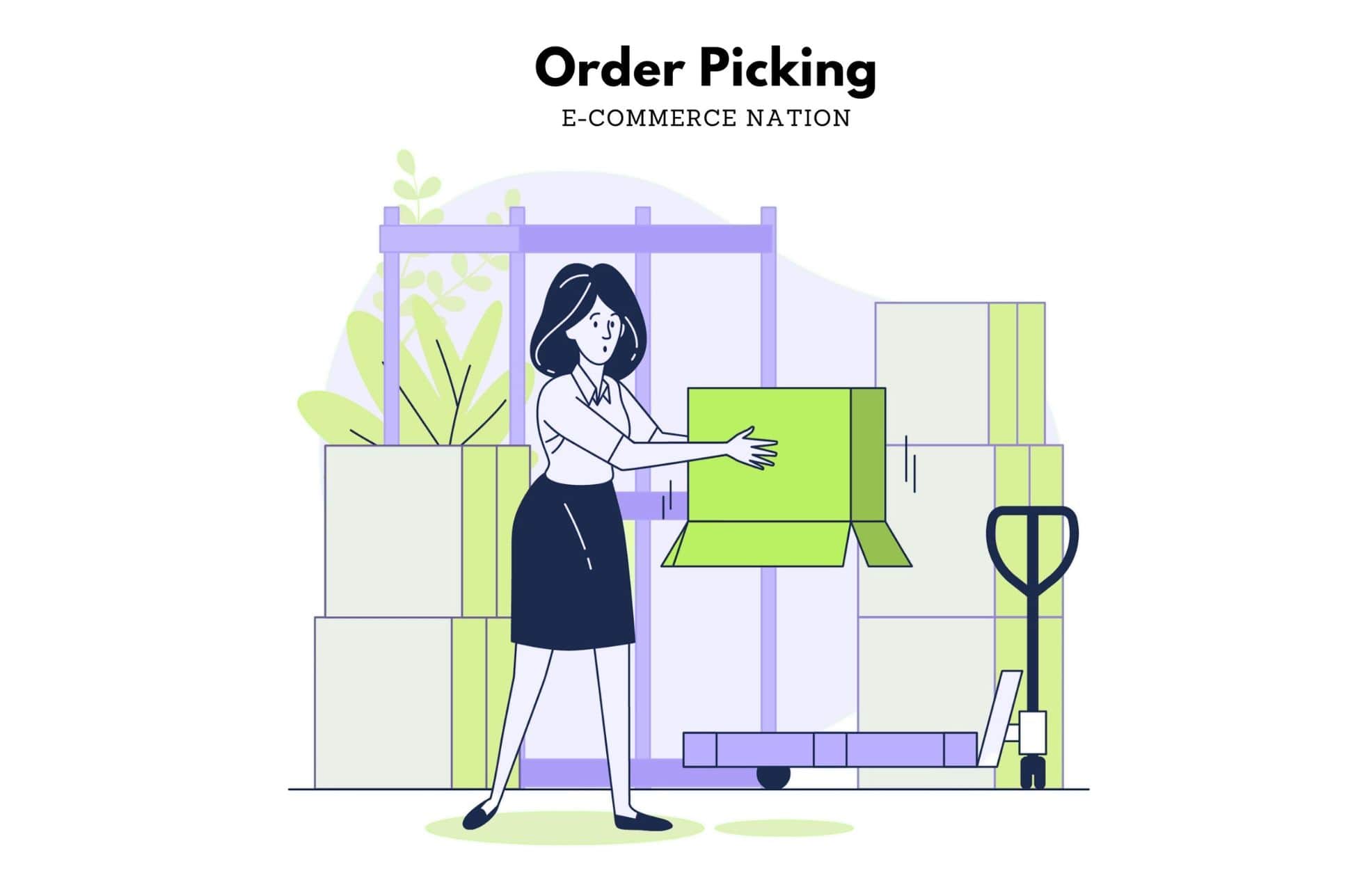With the growth of e-commerce worldwide, rising global expectations on shipping pose a huge challenge for businesses who wish to remain competitive. Everyone wants fast and free shipping, and while your store may be able to offer that domestically, it’s unsustainable if you’ve taken your business globally and ship worldwide. While free shipping is a great motivator to increase sales, there are other aspects of your shipping policy that can be used to combat cart abandonment, convert customers, and build trust in your brand.
How a shipping policy can prevent cart abandonment


One of the main reasons why customers abandon carts is due to unexpected shipping costs. According to the Baymard Institute, 58.6% of people abandoned the cart because they weren’t ready to buy, and outside of those people, 60% said costs such as shipping, taxes, and fees were too high.
Considering that staggering statistic, it’s best to communicate shipping, taxes, and additional fees up front to your customer.
First, start by visiting the official customs website of the country you ship to, and research whether tax & duty will apply to your shipment. If it does, be sure to make your prospective customers aware by mentioning this on your product pages, dedicated shipping policy page, store checkout, and email confirmations.
It’s also recommended to avoid having a static checkout. Static shipping rates don’t provide the breakdown of shipping costs or any information on the courier, which can cause customers to abandon their cart.
Instead, upgrade your store’s checkout with dynamic rates. You can easily find apps on your store platform’s marketplace that will allow you to display calculated rates at checkout so your customers can have access to competitive shipping rates based on their location. Some of these apps can even show the breakdown and exact amount of taxes and fees, allowing you to be completely transparent about shipping costs.
If you’re looking to reduce the cost of shipping for your customer, one way to do this is by working with multiple couriers. If you have a target market that is in one specific region, using a regional courier might work to your advantage.
Regional couriers are good alternatives to major express couriers as they provide slightly cheaper rates and are faster than your typical government postal service.
Providing a variety of shipping options through multiple couriers gives your customer flexibility and visibility in their delivery options, creating trust and converting sales.
Lastly, having a good return policy can help solidify sales. Studies show eCommerce websites with a return policy have more chances of winning customers. Customers like knowing that if they aren’t happy with their purchase, they have the option to return.
If offering free shipping is not a promotion your store can handle at the moment, you can consider offering free returns. As returns are less likely, this could be a good promotion for your store to help boost sales and build trust with new customers.
Use a shipping policy to convert customers
Online retailers have less opportunities than brick and mortar stores to provide personal customer service. Since there isn’t a chance to greet every customer or physically approach and ask if they need assistance, you can use your shipping policy as one way to demonstrate customer service online.
One way to do this is by taking a customer-focused approach to shipping, rather than a seller-focused approach. By offering a variety of shipping solutions, you can exceed customer expectations to deliver real value and encourage customer loyalty.
Start by exploring solutions that squeeze out the best value for customers in service versus cost. When deciding which couriers you should work with, consider the following:
-
Postal vs express couriers
Postal couriers are the cheapest, and while their low prices could be appealing to some customers, their service quality may not be up to par for others. Although express couriers are pricier, you can expect them to provide a more reliable quality of service.
Delivery times
Many customers want fast delivery options, while some are willing to wait. Offer a range of solutions with different delivery times to appeal to everyone.Tracking quality
Choosing a courier with good tracking not only keeps customers updated, but also keeps requests about delivery to a minimum.If duties apply to your shipment, you will have the option at customs to deliver the shipment with duties paid (DDP) or duties unpaid (DDU). For a smoother delivery experience and to avoid delays in customs, it is advised to choose DDP.
Choosing to deliver with duties unpaid can lead to an unpleasant experience for both you and your customer. When the customer gets a call requesting payment of duties, it could catch them off-guard if they were unaware of the additional cost in the first place.
Also, the customs brokers who collect duty payments are all independent businesses with different fee structures that vary per country. It would be impossible to tell the customer what their final cost will be.
When you choose DDP, you pay the duty amount to the courier, who will then process the payment to customs on your behalf. Though couriers will charge an additional fee for this, these fees are fixed and can be 3-4 times cheaper than a customs broker. There would be no need for the customer to be contacted, and the shipment will clear customs quickly.
A shipping policy as a marketing strategy
Free shipping with conditions can be a successful way to market your e-commerce store. There are numbers to back this up: according to Marketing Land, a retail study showed 9 out of 10 consumers cite free shipping as their top incentive to shop online more.
While offering free shipping for everything may not be possible for your store, you can choose to offer it at some order value. Once you find your ideal shipping threshold and include this in your messaging, it can motivate customers to spend more while at the same time, giving them the feeling that they are in control of what they’re spending on.
The “free shipping” messaging also works well in attracting new customers on paid search ads and social media. For example, you can find brands promoting their free shipping offers in their meta description and title tags for SEO purposes to generate more traffic and clicks. On social media, it’s common for brands to mention free shipping on their sponsored ads.
Last but not least, it’s also worth putting this messaging on the front page of your website or as a pop up notification. You can easily find app plugins on your platform’s marketplace to help promote it as well.
In conclusion
Figuring out your shipping logistics should be a priority for your eCommerce business. A well-thought out shipping policy can:
- Attract customers via free or low-cost shipping options
- Convert customers by showing full visibility of all costs
- Retain customers if the delivery experience goes smoothly
As delivery is the last impression your customer will have of your brand, it’s best to put efforts into making sure it’s seamless!





